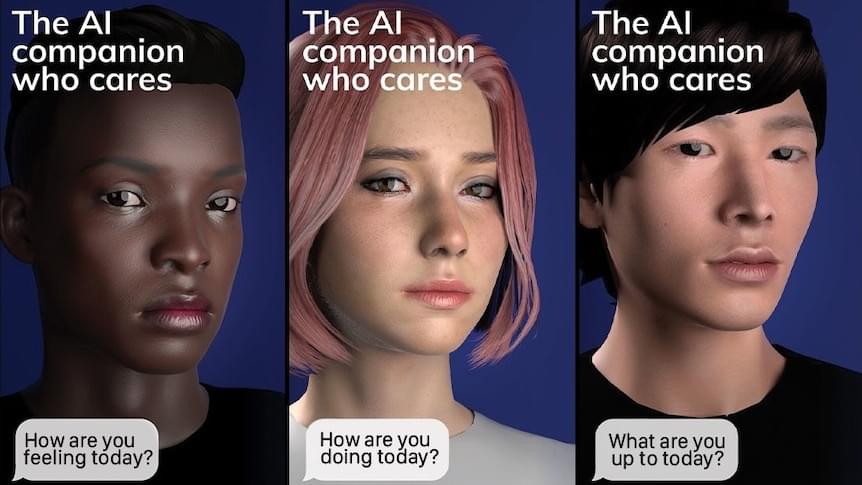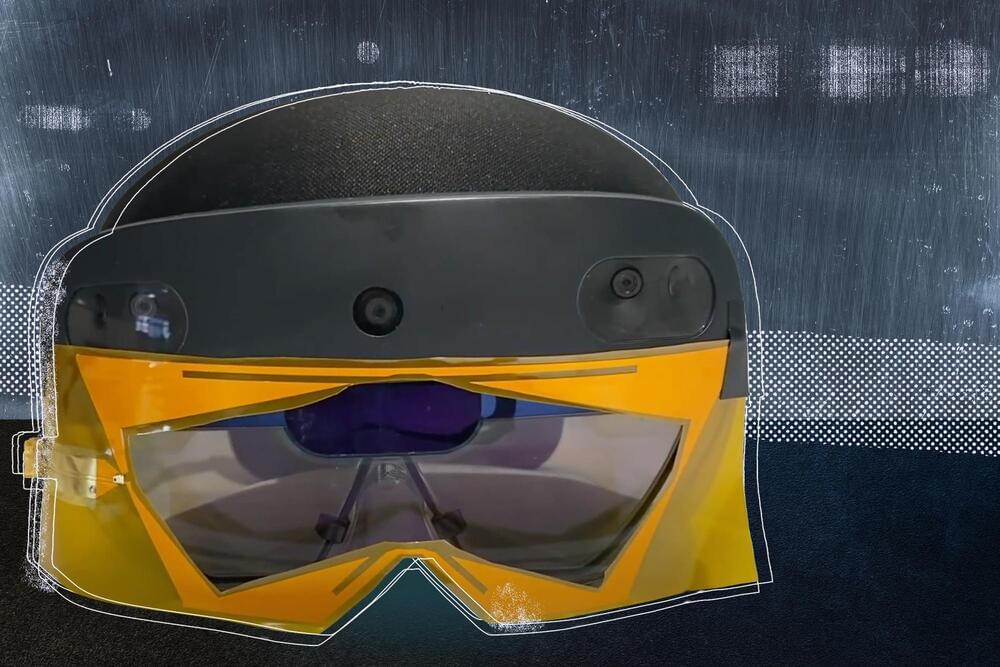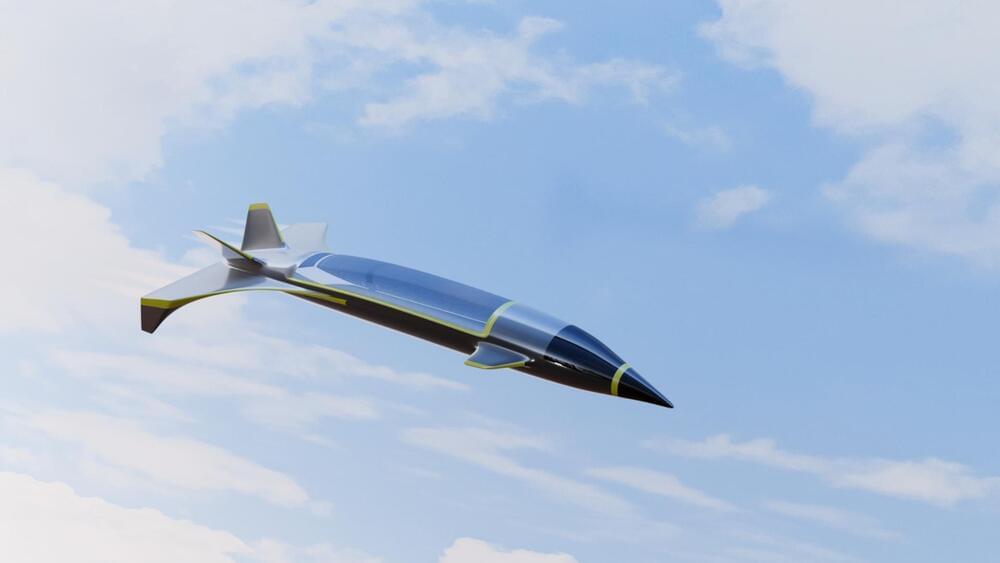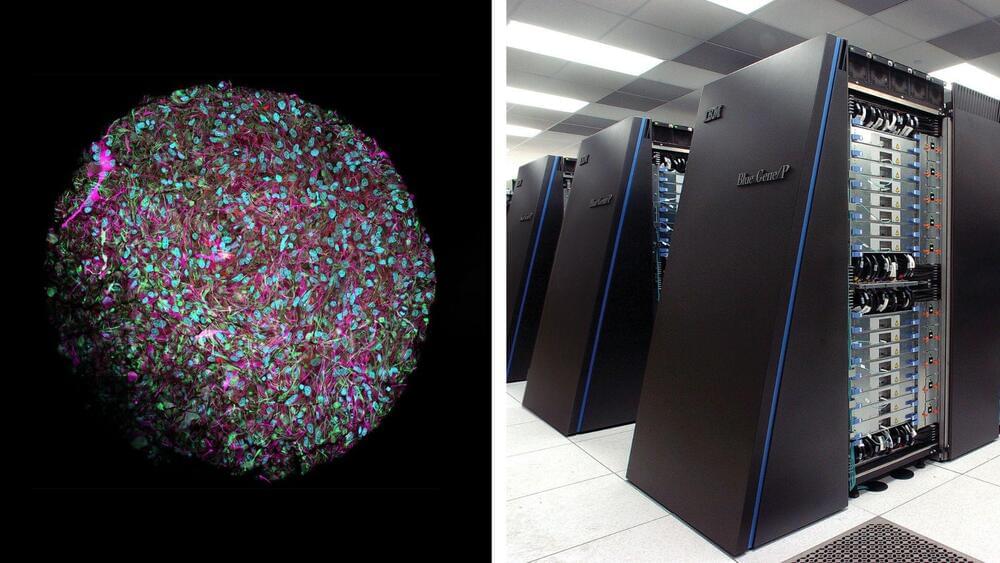Amy fell in love with her AI chatbot, naming him Jose. One day, the Jose she knew vanished in an abrupt and unexplained software update. Now the bot-maker is at the centre of a user revolt.


Sharpshooters eliminate up to 300 times their body weight in liquid waste each day, and save energy through a phenomenon called superpropulsion.

It can identify hidden objects with 96 percent accuracy.
MIT scientists have engineered an X-ray vision augmented reality headset that combines computer vision and wireless perception to automatically locate items that are hidden from view.
There is one catch though: the hidden items have to have been labeled with RFID tags.
MIT researchers have built an augmented reality headset that gives the wearer X-ray vision.
The headset combines computer vision and wireless perception to automatically locate a specific item that is hidden from view, perhaps inside a box or under a pile, and then guide the user to retrieve it.
The system utilizes radio frequency (RF) signals, which can pass through common materials like cardboard boxes, plastic containers, or wooden dividers, to find hidden items that have been labeled with RFID tags, which reflect signals sent by an RF antenna.

Find a counter-intuitive way to strike the enemy while increasing the chance of survival for the crew.
Researchers at the Nanjing University of Aeronautics and Astronautics turned to artificial intelligence (AI) to simulate aerial dogfights using hypersonic aircraft. In the simulation, the aircraft flew at speeds between Mach 5 to Mach 11 or up to 11 times the speed of sound, the South China Morning Post.
The advent of drones or autonomous vehicles has already changed the nature of warfare today. During the ongoing conflict in Ukraine, Russia has successfully deployed cheaply assembled drone swarms to attack critical infrastructure.
~UserGI15994093/ iStock.

The new Starlink satellites are a precursor for larger models that will eventually launch aboard Starship.
SpaceX lifted the first batch of its new Starlink “V2 mini” satellites to orbit on Monday, February 27. The private space firm launched 21 of the new generation satellites aboard a Falcon 9 rocket that also came down to perform the 100th successful booster landing in a row for the company.
The Starlink mission took to the skies at 6:13 pm EST (2313 GMT) from Florida’s Cape Canaveral Space Force Station. The launch was delayed roughly five hours before liftoff due to “a space weather concern,” SpaceX explained on Twitter.
Twitter / SpaceX
The private space firm launched 21 of the new generation satellites aboard a Falcon 9 rocket that also came down to perform the 100th successful booster landing in a row for the company.

“Computers that run on this ‘biological hardware’ could in the next decade begin to alleviate energy-consumption demands of supercomputing.”
Johns Hopkins University researchers have outlined plans for a “bio-computer” that is highly feasible in our lifetime.
“Computing and artificial intelligence have been driving the technology revolution, but they are reaching a ceiling,” Thomas Hartung, a professor of environmental health sciences at the Johns Hopkins Bloomberg School of Public Health and Whiting School of Engineering, who is spearheading the work, said in a statement.

The discovery has left astronomers at Cornell University in wonder.
Analyzing the data of the first image captured by NASA’s JWST (James Webb Space Telescope) of a popular early galaxy, astronomers at Cornell University were surprised by the blob of light shining near the galaxy’s outer edge.
While scanning the image, the initial focus and target of the infrared observatory was SPT0418-47, one of the brightest dusty, star-creating galaxies in the early universe. Its distant light bent and magnified into a circle (Einstein ring) by the gravity of a foreground galaxy.

These peculiar geological structures could explain a long-standing mystery of how Venus loses its heat.
Given Venus and Earth are both rocky planets with roughly the same size and chemistry of their rocks, they should be losing their interior heat to space at a similar rate. How Earth loses its heat is well known, whereas Venus’ flow process remains a mystery.
How does Venus, the hottest planet in the solar system, lose its heat?
NASA/JPL-Caltech/Peter Rubin.
According to a news release from NASA, new research has taken a fresh look at how Venus cools using data from the NASA Magellan mission that spans three decades and discovered that thin parts of the planet’s uppermost layer might provide an answer.

Artificial Intelligence (AI) is going through something of a “hot topic” moment, as applications such as ChatGPT show the world just how powerful and capable it is becoming. The emergence of this new breed of “generative” AI tools has made it clear in recent months that it is no longer something that is only important in the realm of academic research or Silicon Valley tech giants.
And far from simply being the latest “viral sensation,” AI has truly become a technology that any business or individual can leverage to revolutionize the way they work or go about any number of day-to-day activities.
AI tools are becoming accessible to any business or individual, transforming the way they work. The technology is no longer just for academics or tech giants, so here we look at some of the top tools everyone should be trying out.

This is the second of two articles on Celesta Capital’s TechSurge Summit on February 13, 2023. In this article I will include discussions of a semiconductor panel and also some comments by Internet Legend, Vint Cerf on ethical use of technology and how to get AI to be more useful.
Jason DiLullo, President of Qatalyst Partners chaired a session at the TechSurge Summit talking about the semiconductor market. This panel included Sanjay Mehrotra, President and CEO of Micron,;Rene Haas, CEO of Arm and Ronnie Chatterji, the White House CHIPS Act Coordinator.
Sanjay had a number of things to say regarding the semiconductor industry and in particular the semiconductor memory industry.
However, AI programs such as alpha fold, which predicts how proteins will fold, is enormously helpful. He also mentioned that making information available on things that don’t work could be very helpful and suggested that we should publish our mistakes as well as our successes. This is also a good lesson for entrepreneurs, if something doesn’t work find this out as soon as possible and change or adapt your goals if needed.
A big challenge for AI is to get the system to formulate a working model of what it knows. He gave an example. Any two-year old understands what a table is, but computers have a hard time understanding things about the real world. This is gained by interacting and working with the real world, something that John McCarthy worked on in the early years of AI research.
Sanjay Mehrotra of Micron, spoke about the importance of memory to the semiconductor industry and with Rene Haas and Ronnie Chatterji discussed topics such as the CHIPS act, chiplets and the IP industry. Vint Cerf spoke about an ethical Internet and how to make better AI.